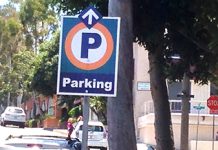Police departments of five Orange County cities including Laguna Beach plan to step up enforcement beginning this weekend against bicycle riders and motorists who disregard traffic rules in an attempt to prevent collisions and injuries.
The special bike safety operation Feb. 19-24 will be conducted with extra patrols of areas frequented by bicyclists and vehicles, said Newport police Sgt. Damon Psaros in a statement.
Bike advocates generally praise the new scrutiny, believing that more awareness by those atop two wheels or four will improve road safety.
No particular incident prompted the campaign, according to Laguna Beach Lt. Jeff Calvert, although Newport has established a bike safety committee and its department has urged bike clubs to self-police their members, who often ride at a high rate of speed in packs that can intrude into traffic lanes.
“Our city’s unique; our streets are so narrow they can stop traffic,” Calvert said of bicyclists, who regularly wheel along high traffic Coast Highway and Laguna Canyon Road, sometimes in races involving hundreds of participants. In Laguna, the patrol division will be asked to keep an eye out on cyclists and motorists who disregard traffic laws and issue warnings or citations for egregious actions, but will not deploy extra officers, Calvert said. Laguna’s skateboarding controversy is not a factor in the effort, he said.
Since January 2009, 30 bicyclists and 44 pedestrians, including skateboarders who are classified as pedestrians, have reported collisions in Laguna Beach, some of which did not involve cars, Calvert said. Those figures contributed to Laguna earning a ranking for the worst traffic safety record based on injuries among 98 small cities in 2009, the most recent statistics complied by the state Office of Traffic Safety.
Despite roadway risks, more two-wheelers are taking to the streets as nearby cities are building bike infrastructure as a way of improving livability.
By comparison to some European countries, the car-saturated United States comes up short in educating pedestrians and motorists alike about sharing the road, said Les Miklosy, chair of the city’s Complete Streets Task Force, which has pressed for more bikeways throughout Laguna Beach.
Two local bike advocates, Laguna Beach Cyclery and the San Clemente-based OC Bicycle Coalition, plan their own bike safety workshops to underscore the law enforcement effort, he said.
“It’s unfortunate but maybe we’ll learn from this,” Miklosy said of the police crackdown.
The goal of the extra enforcement is to educate both motorists and bicyclists about traffic laws that can prevent bicycle riders from becoming injured or killed due to reckless behavior by either, the statement said.
“When you almost get creamed by a 2,000 pound car it sticks with you the rest of the day,” said Patrick Fetzer, owner of Laguna Beach Cyclery Inc., who praised the stepped up police efforts as positive for cyclists. “If motorists are under more scrutiny it will help everybody. That’s good.”
While Fetzer said statistics suggest motorists are mostly to blame for bike collisions, recreational riders rather than active cyclists tend to be its victims. “It’s not rocket science. We can give riders some simple tools that will make them feel more confident,” said Fetzer, who has yet to finalize plans for a bike safety workshop.
“If you can pedal forward, it’s said you know how to ride, but it’s not true; 90 percent is knowing the best procedure to not get run over,” said Michael Hoag, co-founder of the monthly bike-riding group Bike-On, whose members travel Laguna’s sideroads.
Hoag says relying on police enforcement to safeguard bicyclists also reflects a car-reliant culture. The city of Laguna continues to spend most of its resources to abate congestion on auto infrastructure rather than safe walking and riding routes, he pointed out, despite passage of state legislation requiring cities to equally consider the needs of pedestrians and bicyclists when revising transportation planning guidelines.
Because local statistics on injuries to pedestrians, bicyclists, or skateboarders are not broadly available, Hoag said, “people make decisions based on cultural values. It’s not going to be fixed until it’s common knowledge and people become concerned.”




